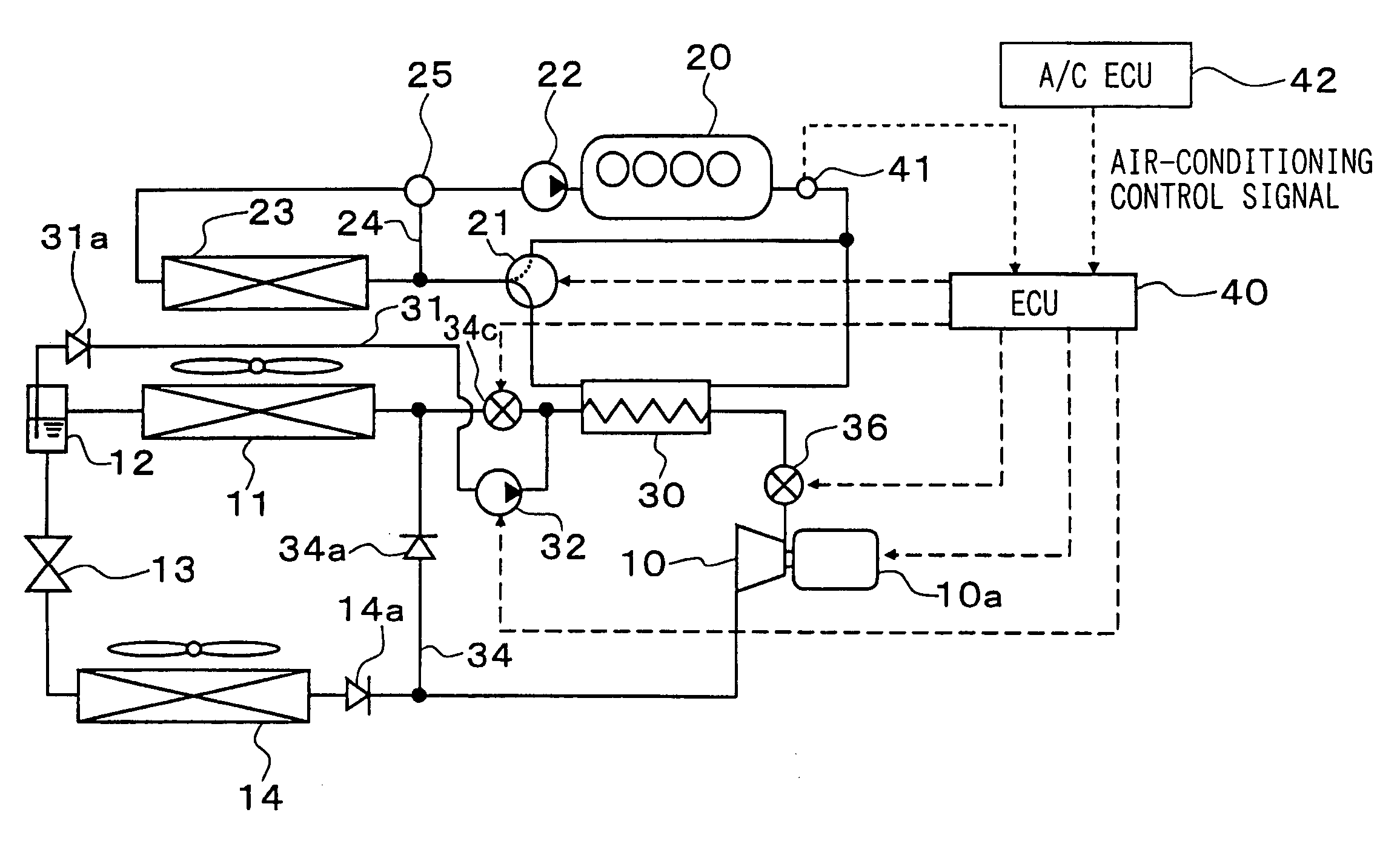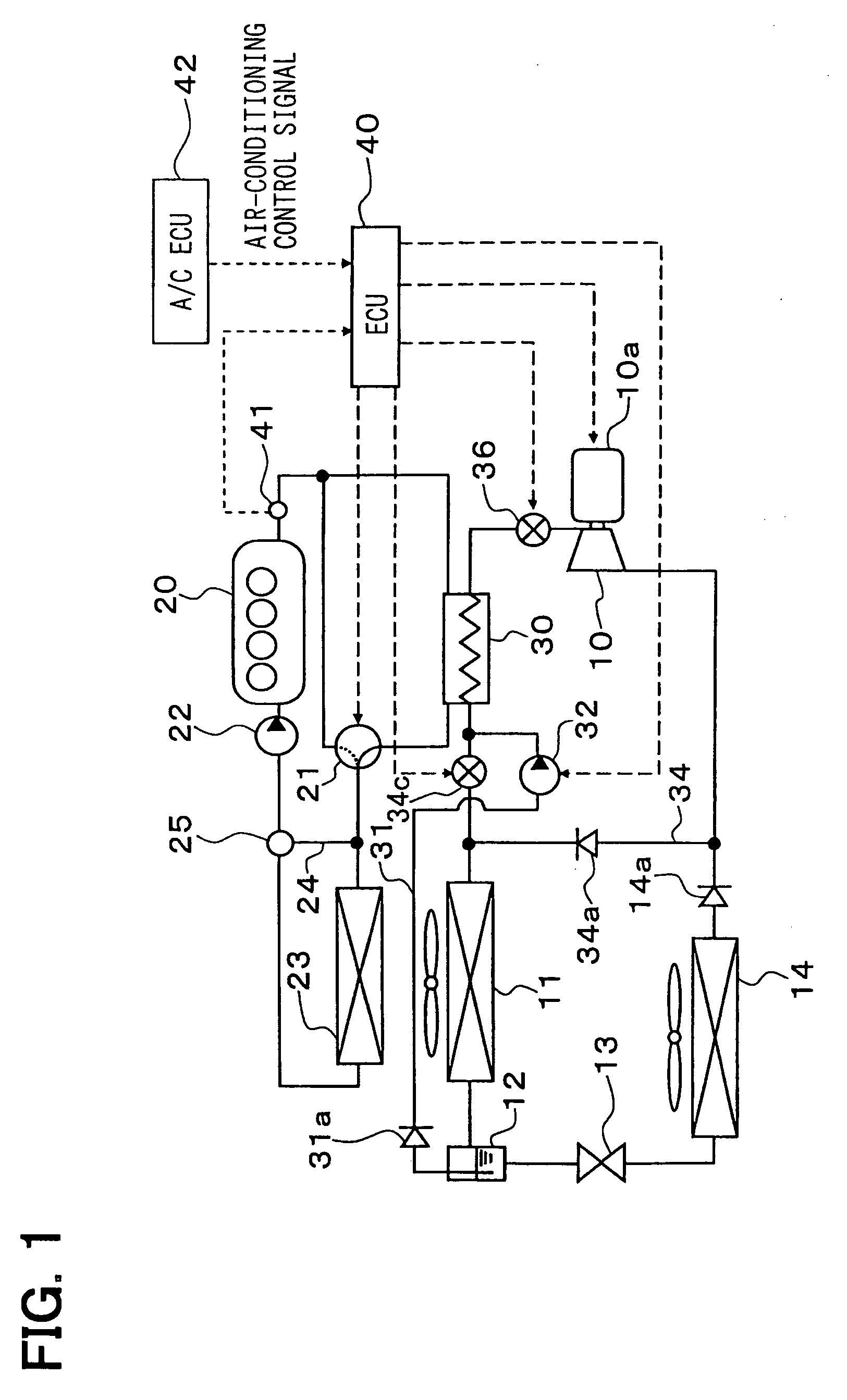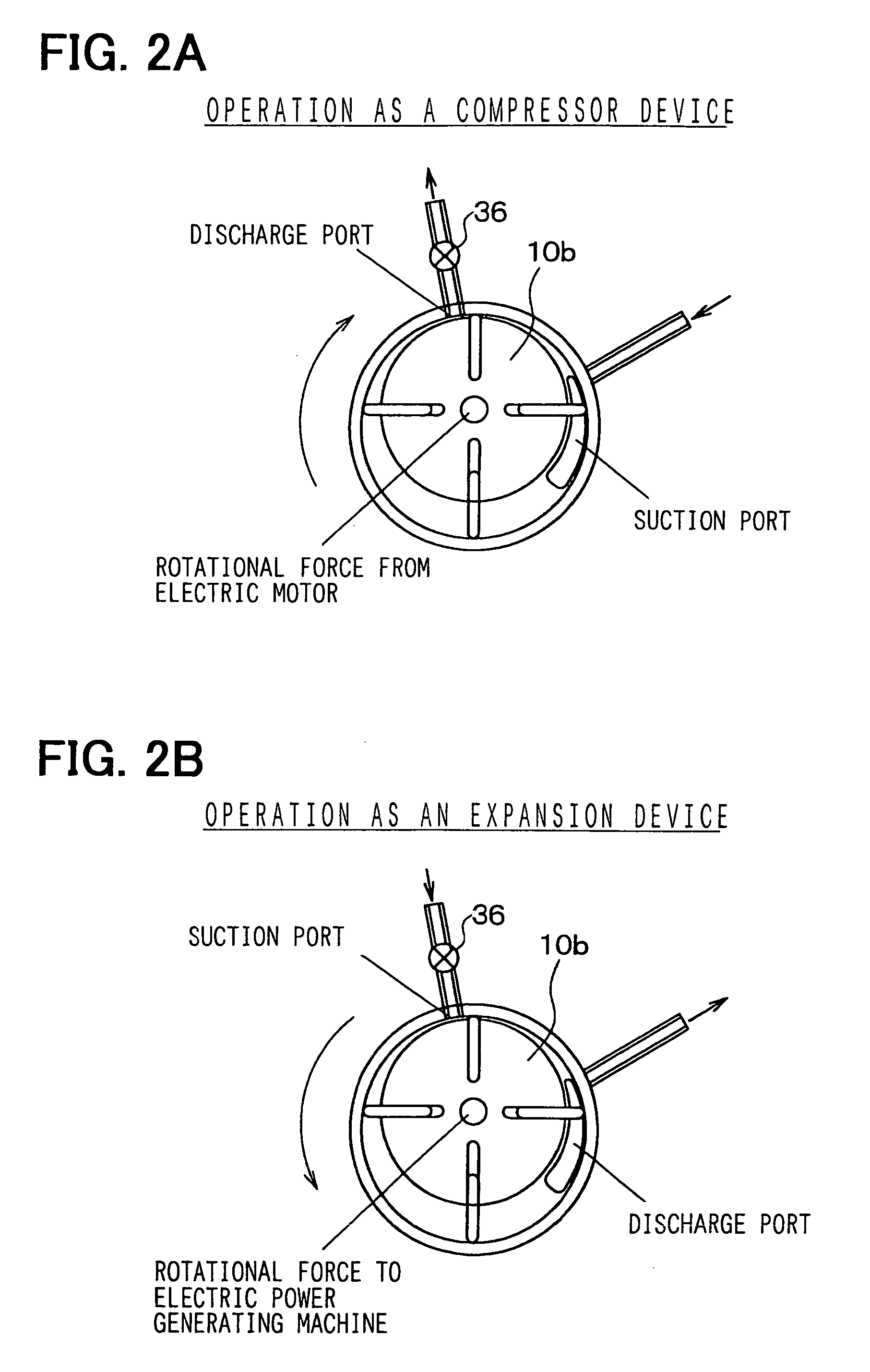Waste heat collecting system having rankine cycle and heating cycle
a technology of waste heat collection and rankine cycle, which is applied in the direction of machines/engines, transportation and packaging, light and heating apparatus, etc., can solve the problems of difficulty in practicing the invention of the above prior art, and achieve the effect of suppressing the temperature of the thermal engine, reducing the fuel consumption ratio of the engine, and increasing the friction resistan
- Summary
- Abstract
- Description
- Claims
- Application Information
AI Technical Summary
Benefits of technology
Problems solved by technology
Method used
Image
Examples
first embodiment
[0022]FIG. 1 is a schematic diagram showing a vapor compression type refrigerating apparatus according to a first embodiment of the present invention, in which a refrigerating cycle having a rankine cycle is used for an air-conditioning apparatus for a motor vehicle.
[0023]The vapor compression type refrigerating apparatus having the rankine cycle collects an energy from a waste heat form an internal combustion engine for generating a driving force for a vehicle, wherein the internal combustion engine is operating as a thermal engine. The refrigerating apparatus makes use of thermal energy generated thereat for performing an air-conditioning operation for the vehicle.
[0024]In FIG. 1, a compressor device 10 integrally formed with an expansion device is a fluid machine having a function of a compressor for compressing a refrigerant and a function of an expander for generating a driving force by expanding a superheated vapor in an isenthropic manner.
[0025]A reference numeral 10a designa...
second embodiment
[0069]In the above first embodiment, the fluid machine 10 comprises the compressor device integrally formed with the expansion device. In FIG. 5 showing a second embodiment, however, a compressor device 33a and an expansion device 33b are independently provided, wherein the compressor device 33a and the expansion device 33b are operatively connected with each other by a one-way clutch (not shown).
[0070]Control valves 34a and 34b are respectively connected to the compressor device 33a and the expansion device 33b, an opening and closing of which is controlled by the ECU 40. The control valve 34a is opened and the control valve 34b is closed for the air-conditioning operation, while the control valve 34a is closed and the control valve 34b is opened for the waste heat collecting operation.
third embodiment
[0071]In the above first embodiment, the three way valve 21 is changed over so that the engine cooling water may flow from the engine 20 through the heating device 30, during the waste heat collecting operation mode. The operation of the waste heat collection can be, however, modified in the following manner. The engine cooling water is kept flowing through the heating device 30, and the water pump 22 and / or the liquid pump 32 is controlled by the ECU 40 depending on the temperature of the engine cooling water, so that the waste heat collecting operation is performed when the temperature Tw of the waste heat exceeds a predetermined value.
Other Embodiments
[0072]The present invention shall not be limited to the embodiments described above and many other modifications can be possible.
[0073]For example, the kinetic energy generated at the expansion device can be stored as an energy of movement in a flywheel or as an elastic potential energy in a spring.
[0074]Other types of the fluid mac...
PUM
 Login to View More
Login to View More Abstract
Description
Claims
Application Information
 Login to View More
Login to View More - R&D
- Intellectual Property
- Life Sciences
- Materials
- Tech Scout
- Unparalleled Data Quality
- Higher Quality Content
- 60% Fewer Hallucinations
Browse by: Latest US Patents, China's latest patents, Technical Efficacy Thesaurus, Application Domain, Technology Topic, Popular Technical Reports.
© 2025 PatSnap. All rights reserved.Legal|Privacy policy|Modern Slavery Act Transparency Statement|Sitemap|About US| Contact US: help@patsnap.com



